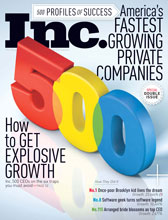
Discovery has long been among, if not the most important selling skill. Gaining access to stakeholders and uncovering needs is key to presenting your value.
However, most discovery looks like this:
" What Keeps You Awake at Night?"
This approach makes it difficult to gain access to execute discovery and makes it harder to uncover areas to add value and differentiate. What is the value to an executive of meeting with you only to tell you what they already know? How are we going to add value when customers, who are more digitally informed than ever, are diagnosing their own needs and prescribing their own solution (many times sub-optimally)? More importantly, it has us following vs. leading.
It’s time to evolve to:
" This is What Should Be Keeping You Awake at Night!"
Sounds simple. right? According to author Eric Fellman in his book, The Power of Positive Thinking, …Life is simple, it’s just not easy!
We feel the transition from zero-based, open-ended discovery to leading with guided discovery is like that. A good doctor, of course, will listen to the symptoms of your pain, but perform her own diagnostic to determine the real causes of pain. After all, she’s the doctor and more qualified to do so! We like to tell clients we don't like to prescribe solutions to problems we haven’t properly diagnosed. For the same reason a doctor is more prepared to diagnose and prescribe, you are more prepared to lead customers through discovery to diagnose their root cause business issues and then present solutions that are beyond their expectations.
As an example, we are in the sales enablement business. Many times we’re talking with heads of sales who really understand their business and how it solves customer problems. What they are not experts in, and what their career has not prepared them for, is sourcing, implementing and measuring sales acceleration initiatives. While their opinion and observations are valid and can be helpful, it is our job to walk them through a cross-functional diagnostic approach to understanding current and desired state of their sales enablement system, and present solutions that not only include items important to them, but present new solutions with new ways of driving business value.
So what is guided discovery, and more importantly, how does one do it? We call our solution Precision Guided Discovery. It is characterized as making the transition from asking customers what their needs are, to performing a current and desired state diagnostic across all areas of their business that our solutions can impact. The steps for executing this kind of discovery are:
- Determine all levels of the customer's business you can impact cross-functionally. We like to use three categories that align with various levels of buying influence. What are those areas that senior leaders care about that impact their strategic level goals? Same for mid-level stakeholders owning initiatives that are in place to execute strategies; and then finally, operational stakeholders focusing on goals which enable operational aspects of executing initiatives.
- Design specific “current/desired state” questions aligned with each area of customer strategies, initiatives and operations that your solution has the ability to impact.
- Execute the diagnostic cross-functionally and across geographies.
- Prepare the current/desired state diagnostic to be presented to the customer as a value-add and gain sponsored access vs. having to earn discovery access one stakeholder at a time.
- Find gaps between current and desired state where your solution can bridge the gap.
- Present your findings, ideally face-to-face in front of a group with cross-functional representation.
PATTERNS
The good news is that when diagramming those areas of customer business you can impact, the list is finite. It also follows patterns. Mapping out business impact in great detail from strategic to operational level issues takes into consideration a very holistic impact of your value that many times, most of your salespeople can’t identify. What we have also seen is that many sales teams are dealing with operational level stakeholders and impact. This preparation allows them to gain access and understand more high level business concerns.
VALUE PROPOSITION
What emerges from cross-functional diagnostic work is nothing short of your value proposition and, in fact, many times drives incremental value the customer wasn't expecting. The value you bring is not the long list of stuff your solution can provide, but those areas where you help customers bridge gaps that help them execute strategy. Customers will fund initiatives that are tied to strategy! The additional benefit for you and the customer is that many times you uncover areas you can help with that are not on the customer's radar and act as incremental and unexpected value.
SPONSORED ACCESS
I mentioned earlier that most organizations are not willing to grant us access (or at the very least, it’s difficult) to execute “discovery.” However, when positioning discovery as a cross-functional, current and desired state diagnostic, we find about 90% of the time we have an executive sponsor us and clear the way by providing a list of key stakeholders and alerting them that this work is happening.
Again, in theory, it’s a simple transition from open-ended questions to precision guided discovery. With a little effort you can begin to build organizational learning and competence for one of the most important areas of selling that is in line with your buyers.





